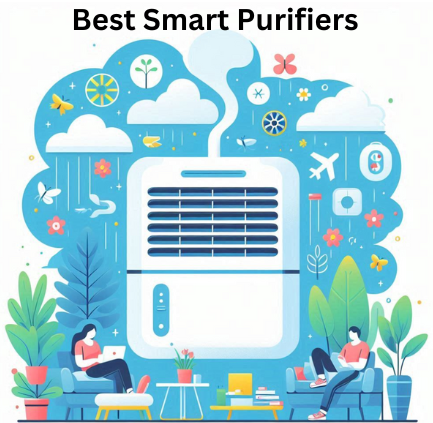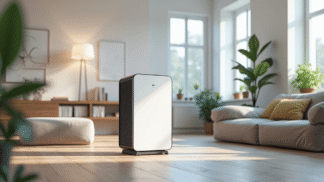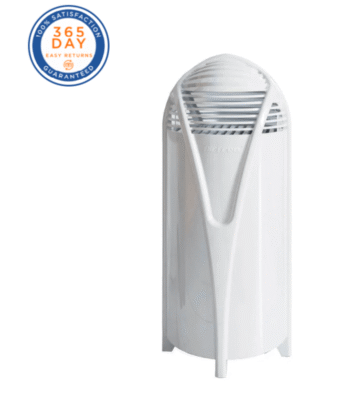Smart air purifiers add a whole new layer to keeping indoor air clean, and I think their ability to detect specific allergens has made home life a lot more comfortable for allergy sufferers like me. Instead of just trapping dust or pet hair, these devices use some pretty advanced tech to pick out and tackle specific allergens in real time. I’m breaking down how they do it, what goes into their design, and some things to look out for when picking one for your home.
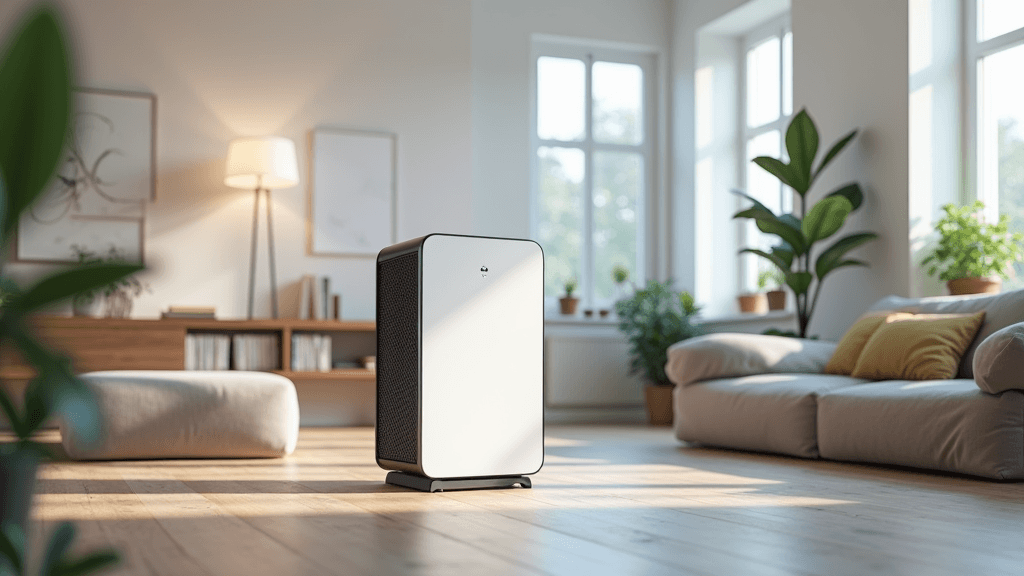
Understanding How Smart Air Purifiers Work
Air purifiers have come a long way over the past decade. The first ones mostly relied on HEPA filters to capture particles and needed to run all the time, but newer smart purifiers use sensors and algorithms to find and respond to the actual particles floating around.
When people talk about “smart” air purifiers, they’re usually talking about devices with sensors for real-time air quality monitoring, WiFi connectivity for app control, and filters designed to capture a variety of pollutants, including allergens. This combo lets the purifier adjust its power level on the fly, send you notifications, and even track long-term air quality trends.
One thing I find really useful is being able to check air quality stats from my phone, even while I’m out. If pollen counts are high, I can make sure the purifier is running at full speed before I walk into the house. That’s a solid way to avoid allergy flare-ups right when I get home.
How Detection Technology Targets Specific Allergens
One of the most impressive features of modern air purifiers is their ability to detect and filter specific types of allergens. Here are the main components that help with this:
- Particulate Sensors: These use laser-based or infrared light scattering to measure tiny particles in the air. They can tell the difference between dust, pollen, pet dander, and smoke based on size.
- Gas Sensors: Some allergens, like those related to volatile organic compounds (VOCs) or mold spores, need special gas sensors to be picked up. These sensors measure gases and odors that can trigger allergies.
- Optical Sensors: These shine a light through the air and detect how much or how little gets scattered by airborne particles. This method works great for spotting pollen and smoke.
- AI and Algorithms: Raw data from these sensors is processed by built-in software that interprets which types of particles or gases are present. Combined with pre-set allergen profiles, the purifier can “know” if there’s a spike in something like pet dander or pollen.
For someone who deals with allergies, knowing that the purifier is watching for my specific triggers, like pollen in spring or dust in fall, is pretty comforting. The peace of mind is hard to beat.
What Allergens Can Smart Purifiers Really Detect?
It’s easy to think that a smart air purifier will magically obliterate any allergen, but in reality, each device has its strong points. Here are the most common allergens smart purifiers can target:
- Pollen: Detected as larger particulates, usually between 10 and 100 microns. Most optical sensors can spot them easily.
- Pet Dander: Quite a bit smaller than pollen, these tiny flakes come from animal skin and hair. Good HEPA filters trap them, but only advanced particulate sensors can measure their levels in real time.
- Dust Mites: Detected as a mix of dust and larger debris; more of a byproduct since dust mites themselves are microscopic, but their waste and body parts can be measured as particulates.
- Mold Spores: Some sensors can tell the difference between tiny mold spores and other particles; the ability to sense VOCs helps too, since mold gives off a specific “musty” gas signature.
- Smoke and VOCs: These come from things like cooking, cleaning sprays, or pollution drifting inside. Gas and chemical sensors pick these up well, and many purifiers use activated carbon to absorb them.
Some higher-end purifiers even allow you to select from a list of popular allergens in the app, and the device will optimize its sensors and filter use to match what you need cleaned most. If you mainly react to pet dander, being able to set that as the priority is a big plus.
Cool Features That Make Smart Air Purifiers Worth Considering
I’ve noticed a bunch of extra features popping up in newer models, which make them a lot more than just “set and forget” gadgets. Here are some of my favorites:
- App Controls: Letting you turn the purifier on or off from your phone (even when you’re not home) is super handy. Allergy alerts and air quality history give you a better grasp of your triggers.
- Auto Mode: This feature uses sensor data to automatically adjust the fan speed or filter system. That way, if there’s a spike in pollen or dust, the purifier ramps up right away.
- Filter Status Monitoring: You don’t have to guess when it’s time to change the filter. The purifier tracks actual usage based on air quality and alerts you when the filter is clogging up with allergens.
- Integration with Smart Home Systems: Many purifiers work with Alexa, Google Assistant, and Apple HomeKit, letting you control them with simple voice commands or routines, like running the purifier before you get home from a jog.
Some purifiers also communicate with other smart home gadgets, like thermostats or air quality monitors, to keep everything in sync and step up efficiency. That way, air cleaning fits into your overall lifestyle smoothly.
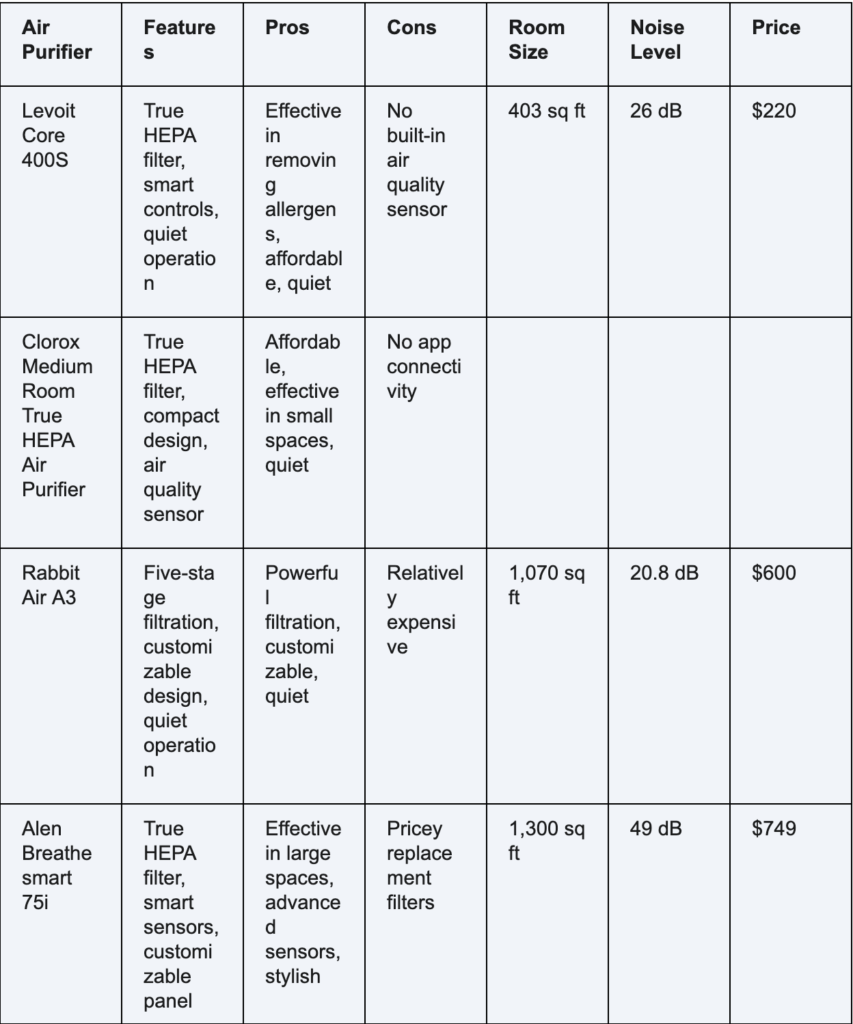
What to Think About Before Buying a Smart Air Purifier for Allergens
I’ve found that marketing for air purifiers can get pretty confusing, especially around allergen detection. These are some tips I keep in mind when shopping around:
- Sensor Types: Not all smart purifiers have sensors for every kind of allergen. Some only detect dust and pollen, while others can sense gases and VOCs too. Double-checking which sensors a purifier uses avoids surprises.
- Filter Types: A HEPA filter is great for pet dander and pollen, but for smoke and chemicals, you’ll want activated carbon or other specialty filters. Combining filter types often gets the best coverage.
- Room Size and Placement: Picking a purifier rated for your room’s size matters a lot. Placing the purifier where allergens usually gather, like near a vent or a spot where the dog likes to nap, helps too. You get cleaner air if it’s in the right spot.
- Noise Level: Some smart features, like a powerful fan, can get pretty loud on high settings. Checking the dB rating is helpful, especially for bedrooms. I personally prefer a purifier that’s quiet enough not to interfere with sleep.
- Maintenance and Cost: Disposable filters add up over time, and more advanced sensors sometimes mean slightly higher costs for upkeep. It’s smart to factor in costs for replacement filters, too.
Allergen-Specific Performance
It’s worth reading user reviews and expert lab test reports for each purifier’s effectiveness. Many brands post independent lab results about their device’s ability to capture particles of specific sizes, which can be pretty helpful for those who are a bit obsessed with the details. Performance in real living spaces sometimes differs from lab conditions, so personal anecdotes can also be useful for choosing.
RealWorld Experience Using Smart Air Purifiers
I started using a smart air purifier a couple of years ago during allergy season, and I noticed within days that the “itchy eye” feeling pretty much vanished indoors. The app reported pollen and dust readings that matched the times I felt the most relief. I eventually added a second unit in my bedroom, placed right where my window faces a busy street, and the sleep quality boost was real.
If you have pets or live in a city with lots of traffic or pollen, a smart purifier quickly becomes a can’t-live-without-it device. Knowing it’s catching everything from pet dander to car exhaust helps put your mind at ease.
Common Problems and Simple Solutions
Even with all this cool tech, there are a few common issues I’ve bumped into or heard from others. Here’s a quick rundown of what I do about them:
- False Readings: Strong smells from cooking or heavily scented candles can sometimes confuse gas sensors. Letting the purifier run in “auto” mode usually sorts this out, or you can set it to “manual” for a bit. Sometimes, just moving the unit helps recalibrate the sensors.
- Filter Lifespan: If the device runs constantly during allergy season, HEPA filters can clog faster. Keeping an extra filter around stops unexpected downtime.
- Poor Placement: Purifiers tucked behind furniture or in awkward corners won’t process air as effectively. I try to keep mine in open areas or on top of a small table where the airflow is best.
- App Compatibility Issues: Updating the app and firmware usually resolves any sudden glitches or connectivity drops. If problems continue, resetting the WiFi or reconnecting often does the trick.
Where Smart Air Purifiers Fit Into Allergy Management
Smart air purifiers aren’t the only step to managing indoor allergies, but they’re one of the easiest upgrades I’ve made at home. I still wash bedding regularly, keep windows closed on heavy pollen days, and vacuum with a HEPA filter, but the purifier does a lot of heavy lifting on the tech front.
- Home offices: With remote work, it’s easy to accumulate dust or have the windows open more often. A smart purifier keeps the air fresh and keeps allergy triggers in check.
- Bedrooms: Running a purifier at night helps keep sleep disruptions from allergies to a minimum. I noticed fewer sneezes or stuffy mornings when I started doing this regularly.
- Kitchens and living spaces: These areas tend to get cooking fumes and pet traffic. Purifiers with VOC sensors are pretty handy here, especially after a big meal or with visitors bringing in allergens from outside.
Frequently Asked Questions
Question: Can smart air purifiers tell exactly which allergens are present?
Answer: Most purifiers use algorithms to estimate broad categories like “pollen,” “pet dander,” or “smoke.” Some give real-time readings for each category, but they can’t always pinpoint the exact allergen type without lab-grade technology.
Question: How often should I run my smart air purifier for allergy relief?
Answer: I keep mine in “auto” mode, so it ramps up when needed. For severe allergies, running it 24/7 in the bedroom and living space works best, especially during peak seasons.
Question: Is there a difference in allergen detection from brand to brand?
Answer: Yes. Some brands focus on specific allergens and provide more advanced sensor tech, while basic models just filter general particulates. Checking specs and user reviews helps pick the model that matches your needs. Brands specializing in allergy care often have more reliable detection features.
Smart Air Purifiers: Are They Worth It for Allergy Relief?
Air quality tech is moving fast, and smart air purifiers are a pretty practical investment for anyone with allergies. With accurate sensors, app controls, and customizable features, getting relief from indoor allergens at home has never been more doable. If you’re tired of sneezing, coughing, or constantly dusting, a smart purifier could make life a whole lot more comfortable. For those looking for extra peace of mind and an easier way to keep tabs on air quality, smart purifiers really do take things up a notch when it comes to managing allergies at home.
